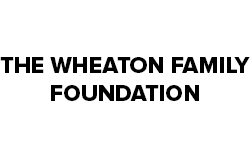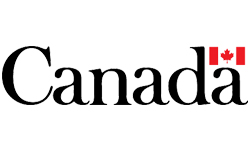CITIZENSHIP RESOURCES GRADE 8: ENGAGED CITIZENS
Part A
Broad Area of Citizenship
Desired Results of Citizenship Study
While analyzing the concepts and processes of a democratic government, students consider the impact of Canada’s relationship to the land and their treaty responsibilities and contemplate the implications of the changing cultural demographics in Canada. Students examine Canada’s history and longtime relationship with First Nations people to understand the events that have shaped Canadian identity.
Enduring Understandings of Citizenship Study
Students will use information to understand that:
- History and current events are understood through diverse historical perspectives.
- Democracy requires discussion and consideration of alternate points of view in order to find a balance between individual perspectives.
- Citizens value the needs of the collective common good and consider how their actions impact the collective well-being.
- Canadian multi-cultural policies challenge citizenship tenets and require consideration of multiple perspectives.
- Canada’s history includes First Nations, Métis, and Inuit governance and perspectives and each have contributed to Canadian identity.
- Decision-making is a complex process with far-reaching impacts.
- Engaged citizens strive to be knowledgeable, uphold their rights, and act on their responsibilities.
- Enduring understandings are the big ideas that stimulate thinking, guide the inquiry and are linked to outcomes.
- Essential questions point to the “big ideas’ in the inquiry and should be considered and reconsidered as the inquiry progresses.
- Answers to these questions form the evidence of learning at the end of study.
Knowledge and Skill Development
- Understand the various roles that support the democratic process
- Demonstrate their roles, rights and responsibilities in a democratic process.
- Investigate the historical events that have impacted Canada’s democracy.
Essential Questions
- What makes democracy work? How could democracy be improved?
- What is the relationship between rights and responsibilities?
- How do my actions influence others? How do the actions of others influence me?
- What is the impact of affirming multiculturalism in a democracy?
Curriculum Outcomes and Indicators
Sask. Curriculum Outcomes:
DR8.2
Describe the influence of the treaty relationship on Canadian identity.
Indicators:
- Describe the influence of varying views of the land in motivating the treaty relationship.
- Explore unfulfilled aspects of Treaty (e.g., education, health care) in Canada.
- Explore the Treaty Land Entitlement process in Canada.
- Relate land claims and fishing and hunting rights to treaty provisions.
- Represent the benefits of the treaties for all Canadians.
DR8.3
Assess how historical events in Canada have affected the present Canadian identity
Indicators:
- Describe Canada’s role in world conflicts since the beginning of the 20th century (e.g., World War I, World War II, the Korean War, the Suez Crisis, the Gulf War, the UN mission in Bosnia, the Afghanistan mission).
- Assess the impact of a variety of important historical events in shaping the Canadian identity (e.g., the effect of the Royal Proclamation 1763 on Francophone and Indigenous peoples; the fur trade economy; Quebec Act 1774; the Acadian deportation; the Loyalist migration; the War of 1812; Canada’s role in World War I; the creation of the health care system; peace-keeping activities; the role of the RCMP in the development of the Canadian West; Canadian Confederation 1867; the building of the national railroad; the Métis resistance 1870 and 1885; John A. Macdonald’s National Policy 1879; October Crisis 1970; the development of the Canadarm; the development of the music and film industry in French and in English in Canada).
- Examine the influence of American mass media and popular culture on the Canadian way of life.
- Analyze the similarities and differences in the values, beliefs, and ways of life of Canadians and Americans.
- Compare the perspectives taken in cases of injustice in Canadian history (e.g., the vote for women, vote for Indigenous peoples, Chinese head tax, internment of Japanese and Ukrainian Canadians, restrictions on immigration of Jews during World War II).
PA8.2
Examine the role of power and authority in the application of diverse decision-making processes in a variety of contexts.
Indicators:
- Contribute to classroom decision making by using the majority-rule model and the consensus model.
- Formulate contexts in which the majority-rule model and the consensus model would be effective.
- Investigate and describe the consensus decision-making model employed in traditional Indigenous communities or jurisdictions.
- Describe traditional First Nations, Inuit, and Métis models of governance and selection of leaders.
- Compare the structure of leadership and decision-making process in an Indigenous community to that of the parliamentary system in Canada.
PA8.3
Present the evolution of a piece of legislation, from its first conception to its implementation.
Indicators
- Report to the class on the evolution of a rule or a policy presently used in an area of the school (e.g., playground: a student riding his bicycle on the school grounds before parking it hits another student, which causes caregiver, parent phone calls, staff meetings, school board concern, and a policy which prevents students from riding bicycles on the school ground).
- Formulate a plan for the recommendation of a new policy for the student body, including the issue requiring resolution, identification of the policy options providing resolution, explanation of how the proposed options might resolve the issue, and recording the process of the selection of the recommended option.
- Describe the catalyst for a law recently enacted, tracing the need and process for enacting the new law.
- Represent the roles and responsibilities of various players in executive government, including the Prime Minister, the House of Commons, the Senate, and the Governor-General.
- Outline the processes of a bill becoming law.
PA8.4
Assess the impact of citizens’ willingness and ability to actively engage in the Canadian political processes.
Indicators
- Present the reasons community members have chosen to run for office or to accept a leadership appointment (e.g., student representative council member; municipal or band council member; Member of the Legislative Assembly; school board member; health board member; community service organization leader).
- Describe examples of legislation or policy at a variety of governance levels (federal, provincial, First Nation, or Métis) which were initiated, modified, or rejected as a result of public pressure.
- Review the website of a provincial or federal political party, and propose and justify a redesign of the website in order to engage adolescents in political activity
- Investigate the political involvement of community members, including why people choose to vote or not vote, and why people choose to join or not join a political party.
- Articulate the reasons a person would get involved in the Canadian political system and the possible actions which might be taken (e.g., lobby Members of Parliament, hold elected members accountable, work for a political party, be informed).
- Analyze the obstacles to political involvement (e.g., language, culture, disability, socio-economic status, gender, time constraints, apathy).
- Propose avenues for people to individually and collectively influence the Canadian political system (e.g., voting, civil disobedience, participation in political parties, labour organizations, non-governmental organizations).
- Speculate about the characteristics of the school or community environment without the involvement of people in its leadership and decision-making processes (e.g., What if no one runs for student council office; no one participates in SRC planned events; no one runs for local government office; no one belongs to community organizations).
- Research and report on the consequences of the non-engagement in the electoral process (e.g., 1932 German election).
- Construct an action plan for his or her personal involvement in the Canadian political system.
© 2024 Concentus Citizenship Education Foundation Inc. All Rights Reserved.









